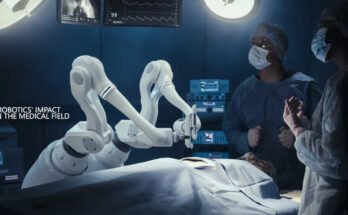Enhancing Patient Care with Root Cause Analysis (RCA) in Healthcare
When we think about Root Cause Analysis (RCA), manufacturing plants and factories may come to mind. However, RCA is also a powerful tool in healthcare, aimed at improving patient care outcomes. It is used to investigate adverse events and medical errors thoroughly, identifying their underlying causes. This process is essential for preventing recurrence and enhancing patient safety.
How RCA Plays a Role in Healthcare
Adverse events and medical errors, although unfortunate, are not uncommon in healthcare settings. These incidents can range from minor inconveniences to severe, life-threatening situations. RCA plays a critical role in understanding and dissecting these incidents. By identifying the root causes of adverse events, healthcare providers can take proactive measures to prevent their recurrence.
Once the root causes are identified, healthcare providers can develop strategies aimed at mitigating patient harm. These strategies could include revising protocols, enhancing staff training, improving communication channels, or upgrading equipment. The goal is to create a safer environment with a significantly reduced likelihood of similar incidents occurring.
RCA promotes a culture of safety within healthcare settings. By openly addressing the causes of adverse events and medical errors, healthcare organizations demonstrate their commitment to transparency and continuous improvement. This approach not only improves patient care but also fosters a sense of accountability and vigilance among healthcare professionals.
Best Practices for Conducting Effective Root Cause Analysis
Conducting RCA requires a structured approach. It involves a step-by-step guide and methodology that engages multidisciplinary teams and stakeholders. This collaborative effort is key to a comprehensive analysis and effective problem-solving.
The success of RCA hinges on the involvement of diverse healthcare professionals. Key strategies include regular training, open communication, and a shared commitment to patient safety. Each member brings unique expertise, contributing to a more comprehensive analysis. Engaging stakeholders, such as patients and their families, can also provide valuable insights and foster a more patient-centered approach to care.
Moreover, creating an environment where team members feel comfortable sharing their insights and concerns is crucial. Open communication encourages thorough exploration of issues and fosters a collaborative atmosphere. A shared commitment to patient safety ensures that everyone works towards the common goal of improving patient care and preventing future incidents.
Real-World Applications and Case Examples of RCA
RCA has been successfully applied in various healthcare settings, leading to significant improvements in patient care and safety. Here are a couple of examples:
- Reducing Medication Errors in a Hospital Setting
- Situation: A hospital noted a recurring pattern of medication errors.
- RCA Application: An RCA revealed that the errors were primarily due to miscommunication between prescribing doctors and pharmacy staff, coupled with a confusing electronic health record system.
- Outcome: Changes were implemented, including a revision of the electronic prescription system and enhanced training for staff on effective communication. This led to a significant reduction in medication errors.
- Addressing Surgical Complications
- Situation: A surgical unit observed an increase in post-operative infections.
- RCA Application: RCA identified factors such as inadequate sterilization procedures and rushed pre-operative preparations.
- Outcome: The hospital improved sterilization protocols and implemented more rigorous pre-operative checks, resulting in a decrease in post-operative infections.
Challenges and Limitations of Root Cause Analysis
Despite its numerous benefits, RCA faces challenges in the healthcare sector. Some of the notable ones include:
- Resistance to Change
- Changing established practices and protocols can be difficult. Some staff may be skeptical about new approaches, which could hinder the implementation of RCA recommendations.
- Solution: Creating a culture that values continuous learning and improvement, rewarding efforts to improve patient safety, and encouraging open discussion of mistakes and lessons learned can help overcome resistance.
- Limited Resources
- Healthcare facilities often face resource constraints, which can limit the scope and depth of RCA. Staffing, time, and financial resources may be insufficient for comprehensive analysis and the implementation of changes.
- Solution: Allocating adequate resources—including time, personnel, and funding—is essential for effective RCA. Healthcare organizations may need to prioritize patient safety initiatives and seek external funding or support.
- Complexity of Healthcare Environments
- Healthcare environments are highly complex, with numerous processes and interdependencies. Identifying root causes in such intricate systems requires a deep understanding of various factors and their interactions.
- Solution: Streamlining the RCA process by developing clear guidelines, templates, and tools can make it more manageable and less daunting.
The Future of Root Cause Analysis in Healthcare
The future of RCA in healthcare is bright, with continuous advancements and innovations. Emerging trends in RCA include the integration of more sophisticated data analysis techniques and the adoption of proactive approaches. These advancements aim to predict and prevent incidents before they happen, rather than just reacting to them.
Role of Technology in RCA
Technological advancements are playing a significant role in the evolution of RCA practices. Various RCA tools, like EasyRCA, are enhancing the efficiency of RCA in healthcare settings. These tools offer several benefits, such as streamlining the RCA process, enabling collaborative workflows in real time, and providing templates and reporting tools.
The use of technology is making RCA more efficient and data-driven. Advanced tools can help identify patterns and trends that might indicate systemic issues, making the RCA process more accurate and timely.
Conclusion
RCA is a critical tool for improving patient safety and care quality in healthcare. By following best practices, involving diverse teams, learning from real-world examples, and overcoming challenges, healthcare organizations can significantly enhance patient care. With technological advancements on the horizon, the future of RCA in healthcare holds great promise for further improvements in patient safety and healthcare outcomes.








